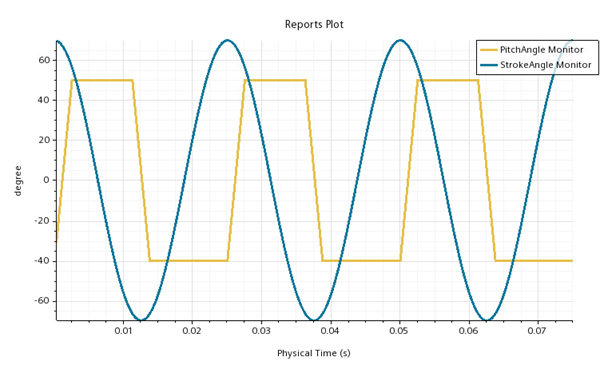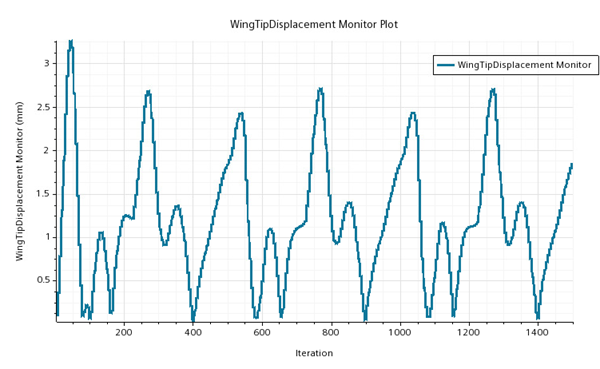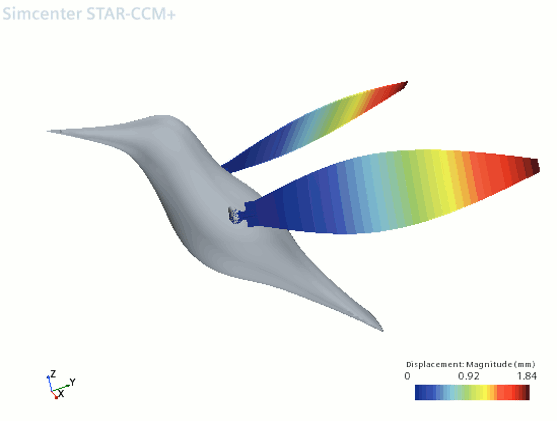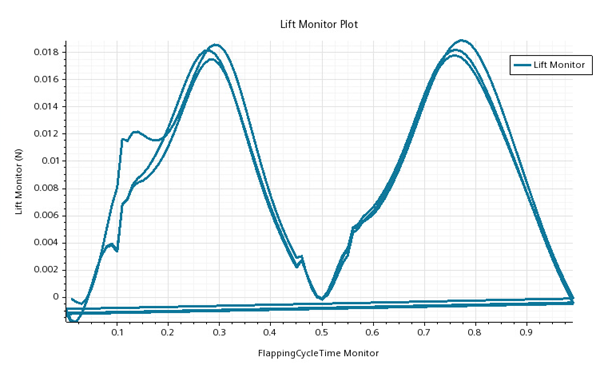Running the Simulation
Before you run the simulation, you define the simulation time, the time-step, and the stabilization method for the Fluid Structure Coupling solver.
To define the solver parameters:
- Select the node, and set Stabilization Method to Dynamic.
- Select the node and set Time-Step using the expression ${FlappingPeriod}/${StepsPerCycle}, which corresponds to 1/100 of the flapping period.
-
Select the Mesh Morpher node and set the following
properties:
Property Setting Boundary Layer Morphing Activated Morph At Inner Iterations Activated -
Edit the
Stopping Criteria node and set the following properties:
Node Property Setting Maximum Inner Iterations Maximum Inner Iterations 5 Maximum Physical Time Maximum Physical Time 3*${FlappingPeriod}-1E-8 Maximum Steps Enabled Deactivated In Simcenter STAR-CCM+, numbers have finite precision. As simulations stop when the maximum physical time is equal to or greater than the simulation time, subtracting a small quantity (1E-8) from the desired stopping time (3*${FlappingPeriod}) ensures that the solver completes the specified steps per cycle.
-
Click
 (Run).
(Run).
- When complete, save the simulation.
- Prescribed Angles
-

- Periodic Lift
- This plot shows the lift as a function of the flapping cycle time. At every new cycle, the lift goes back to its initial value. When the solution converges, the lift curves for each cycle overlap.
- Wing Tip Displacement
-

- Fluid Pressure and Velocity
-

- Wing Deformation
-

